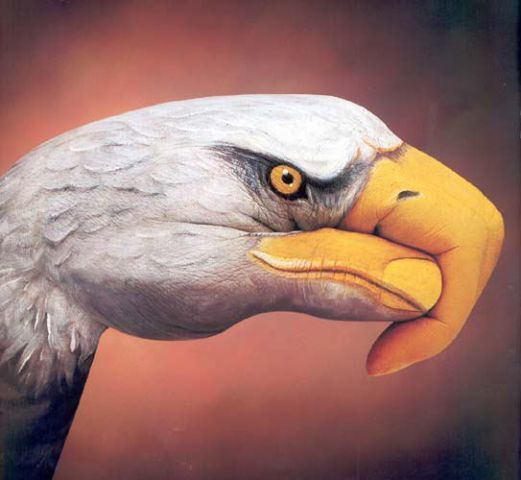Introduction
Body painting is one of the oldest art forms of humans. Camouflage is a form of body painting, first originated in ancient time when hunters painted their face and body to camouflage them into the forest background. In modern body painting, camouflage body painting is very popular in commercial advertisements and PR campaigns. Body painters paint on the skin of models with the same colors and patterns of the background to create the camouflaging effect. However, artists such as Emma Hack and Liu Bolin have reinvented and took this form of body painting up to the next level. They made it a form of art. While Emma Hack beautifully painted the body canvas of her models to make them blend into the wallpaper background at Florence___, Liu Bolin transformed into the invisible man by having himself painted to blend into various background locations. In this entry, I will talk about the camouflage art of Emma Hack and the next entry will be about Liu Bo-lin.
Emma Hack – The Skin Illustrator
The 39 year-old artist from Australia is a skin illustrator and photographer, produces “skin illustrations” by painting on the skin of models. She was trained as a makeup artist, so “painting in skin is the second nature to me”, said Emma. When asked for her definition on skin illustrator and body painting, she explained her thought on body painting as creating a new character and telling a story on the body, and skin illustration as creating a special effect on the skin, with the aid of lighting and camera angles. Emma decided to produce her new collection with the inspirations from the wallpaper patterns of the interior designer Florence Broadhurst. She hired models that she thought that they would fit the wallpaper patterns and paint on their bare skin. It takes Emma approximately 8 to 15 hours to create a piece of camouflage art. Here are some of her beautiful pieces from her Florence Broadhurst wallpaper collection:
Source: ‘I am a canvas’: how artists are reinventing body painting by Tony Meyers. Smart Movie Making http://smartmoviemaking.com/i-am-a-canvas-how-artists-are-reinventing-body-painting/
Picture source: emmahackartist.com
Mai Tran





























